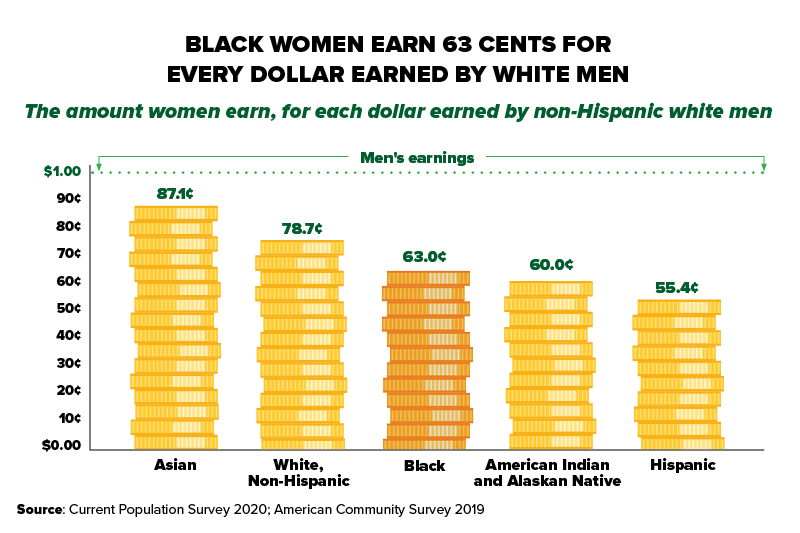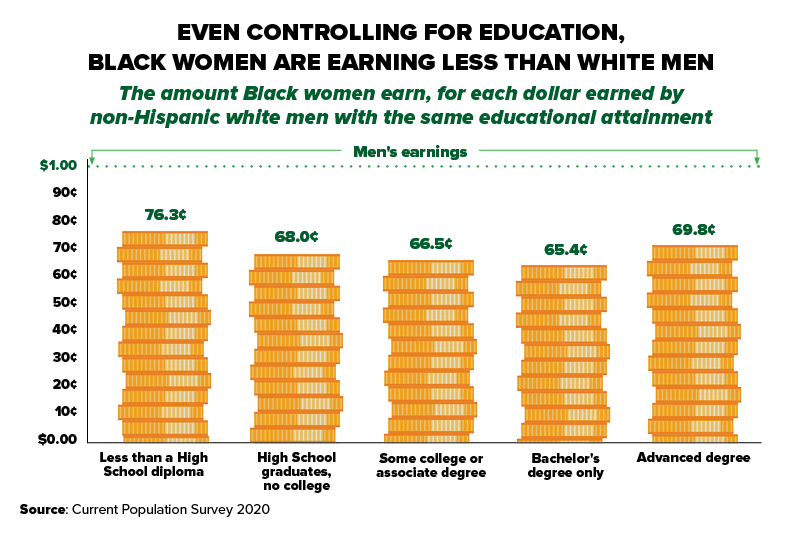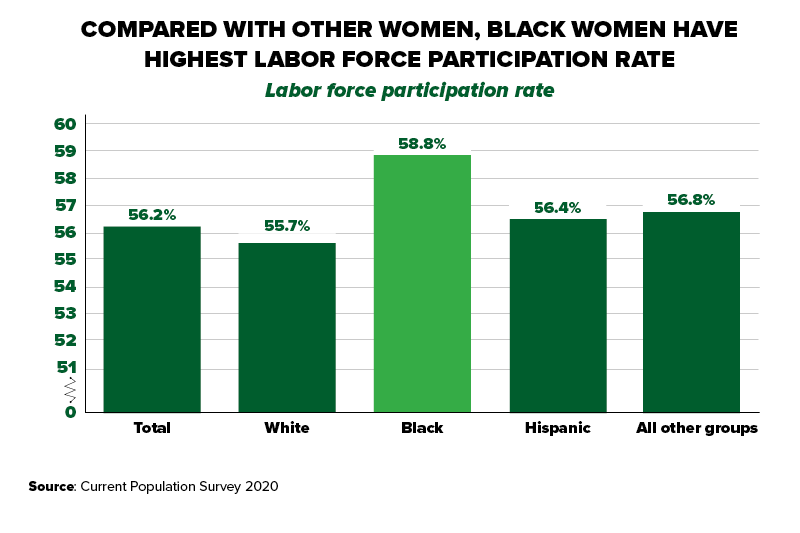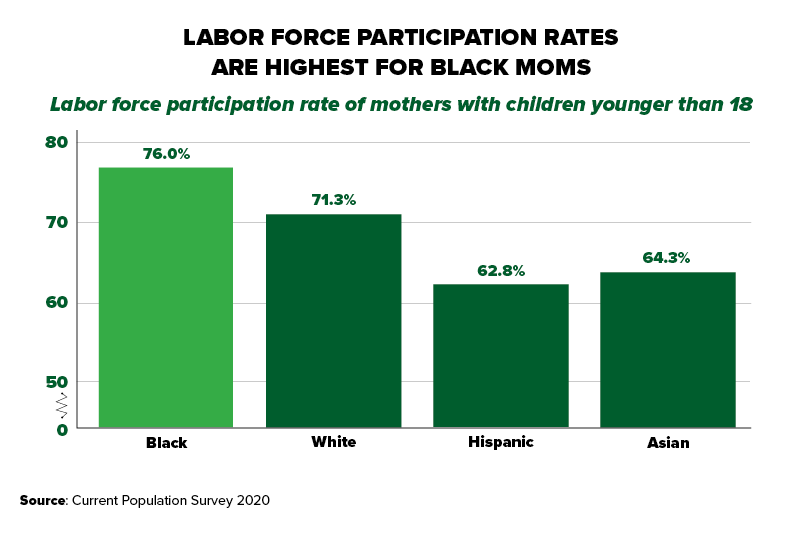Black women are an integral part of the American labor force but have long faced a pay gap due to longstanding inequities in education and the labor market. In addition, they have been disproportionately impacted by the pandemic. Black women workers are overrepresented in low-paying service sector jobs, which were among the hardest hit, in terms of job losses.
Aug. 3, 2021, marks Black Women’s Equal Pay Day, a symbolic representation of the number of additional days Black women working full-time, year-round, must work, on average, to earn what white, non-Hispanic men earned the year before.
Here are five facts about Black women in the labor force:
1. Black women earn 63 cents for every dollar earned by white, non-Hispanic men
Black women’s earnings are 63.0% of white, non-Hispanic men’s earnings – the third-widest gap after Native women (60%) and Hispanic women (55.4%). In comparison, white, non-Hispanic women earn 78.7% of white, non-Hispanic men’s earnings, and Asian women earn 87.1%.

2. This wage gap is not just driven by educational differences
Even controlling for education, Black women still earn less than their white male counterparts. Among those with a bachelor’s degree, Black women only earn 65% of what comparable white men do, for instance. And among people with advanced degrees, Black women earn 70% of what white men do. In fact, Black women with advanced degrees have median weekly earnings less than white men with only a bachelor’s degree.

3. Black women have the highest labor force participation rate of all women
Typically, Black women have higher labor force participation rates than other women, meaning a higher share of Black women are either employed or unemployed and looking for work. For instance, in 2019, Black women's labor force participation rate was 60.5% compared with 56.8% for white women. Even in 2020, in the midst of the pandemic, their labor force participation rate was 58.8%, compared to 56.2% for women overall.

4. Black women have also experienced high unemployment, especially in the wake of the pandemic
In 2020, Black women’s unemployment rate was 10.9%, compared to 7.6% for white women and 8.3% for all women. This is no doubt reflective of the steep job losses and slow job recovery experienced by this group since early 2020, though even prior to the pandemic, their unemployment was relatively high (5.6%) compared with white (3.2%), Asian (2.7%) and Hispanic (4.7%) women.
5. Black moms, too, have relatively high labor force participation rates
Black mothers – two-thirds of whom are equal, primary or sole earners in their households – have higher labor force participation rates than other moms. This has historically been the case, and 2020 was no exception: 76.0% were in the labor force, compared with 71.3% of white moms, 62.8% of Hispanic moms and 64.3% of Asian moms.

Mathilde Roux is a Presidential Management Fellow in the department's Women's Bureau. Follow the bureau on Twitter @WB_DOL.

 U.S. Department of Labor Blog
U.S. Department of Labor Blog